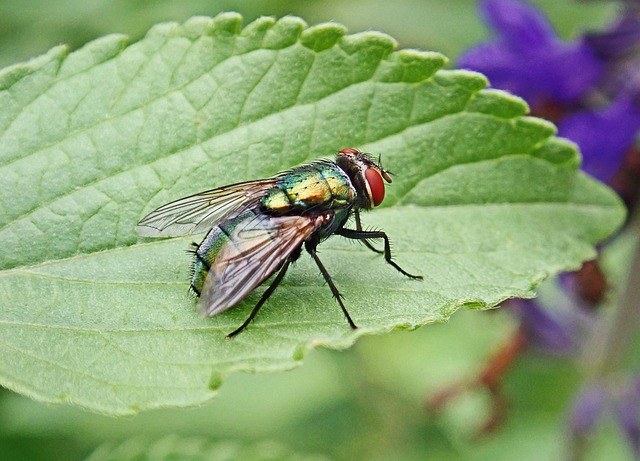A sowbug infestation involves a significant presence of Meristopus species crustaceans in dark, damp areas, causing fabric, wallpaper, and electrical insulation damage. Effective treatment requires understanding their life cycle and implementing preventive measures like sanitation and moisture reduction. Professional pest control services offer solutions including insecticides, heat treatments, and mechanical removal. Prevention strategies involve sealing entry points, maintaining cleanliness, removing clutter, trimming vegetation, and acting promptly on suspected infestations.
Understanding the sowbug life cycle is key to effective pest control. Sowbugs, small, flattened insects common in homes and gardens, can cause significant damage if left unchecked. This article guides you through recognizing a sowbug infestation, deciphering their life cycle, and implementing robust treatment strategies. We also offer preventive measures to deter these pests from returning, ensuring your living spaces remain bug-free. Learn how to effectively manage and eliminate sowbug infestations with our expert advice on sowbug infestation treatment.
What is a Sowbug Infestation?
A sowbug infestation refers to an overwhelming presence of these tiny, wingless insects in a particular area, often leading to significant distress for homeowners and business owners alike. Sowbugs, scientifically known as Meristopus species, are isopod crustaceans that thrive in dark, damp environments. They are commonly found in basements, attics, and other areas with high humidity. While they don’t bite or spread diseases, their relentless proliferation can cause considerable damage to fabrics, wallpapers, and even electrical insulation due to their appetite for organic matter.
Understanding the sowbug life cycle is a crucial step in effective sowbug infestation treatment. These insects pass through several developmental stages, from egg to adult, during their lifespan. Identifying these stages allows for targeted control measures. Proper sanitation, reducing moisture levels, and sealing entry points are key preventive steps. If an infestation does occur, professional pest control services can employ a variety of methods, including insecticides, heat treatments, and mechanical removal, to eliminate sowbugs and prevent future invasions.
Identifying the Sowbug Life Cycle
Understanding the sowbug life cycle is a crucial step in implementing effective sowbug infestation treatment strategies. These insects, often mistaken for termites, go through distinct stages—egg, nymph, and adult—each with unique characteristics. Identifying these stages allows homeowners and pest control professionals to intervene at critical points, breaking the cycle and preventing further invasions.
During the egg stage, sowbugs lay their eggs in cracks and crevices, making it essential to seal entry points as a preventive measure. As nymphs emerge, they are smaller but quickly grow, molting several times before reaching adulthood. Adult sowbugs, recognizable by their oval shape and segmented bodies, can survive for up to one year, during which they feed on organic matter, often infesting homes during the colder months. Recognizing these phases enables targeted treatments, ensuring a more effective and efficient sowbug infestation treatment approach.
Effective Sowbug Infestation Treatment Strategies
Effective Sowbug Infestation Treatment Strategies involve a multi-faceted approach to ensure successful eradication. The first step is identifying the presence of sowbugs, which often require professional inspection due to their nocturnal and reclusive nature. Once detected, isolation is key to preventing further spread; this may involve sealing entry points and treating affected areas with targeted pesticides.
For sustainable management, cultural control methods are preferred. This includes maintaining good sanitation practices, regular vacuuming, and removing potential hiding places like clutter or debris. Biological control agents, such as specific predators or parasites, can also be introduced to the environment to suppress sowbug populations naturally. In severe cases, targeted chemical treatments should be considered, focusing on areas where sowbugs are most active and using products recommended by pest control experts.
Preventing Future Sowbug Infestations
Preventing future sowbug infestations starts with identifying and addressing potential entry points into your home or property. These pests are known to enter through cracks, gaps in walls, windows, doors, and even utility pipes. Regular inspections can help pinpoint these areas and seal them off using appropriate materials like caulk or steel wool. Maintaining a clean environment, especially in kitchens and bathrooms, is crucial. Proper food storage, regular cleaning, and removing potential water sources will make your space less attractive to sowbugs.
Additionally, keeping the area around your home free from debris, leaves, and vegetation can help deter these pests as they prefer dark, moist places. Regularly trimming bushes and trees ensures there’s minimal hiding spots nearby. If you suspect an ongoing infestation, prompt action is key. Effective sowbug infestation treatment involves professional pest control services that employ safe and tailored solutions to eliminate existing bugs and prevent future ones.
Understanding the sowbug life cycle is key to effective pest control. By identifying their stages of development, from eggs to adults, you can implement targeted strategies to manage and prevent infestations. Combining eco-friendly treatments, regular inspections, and proactive measures will help ensure your home or property remains free from these persistent pests. Remember, early detection and a multi-faceted approach are essential in the battle against sowbug infestation treatment.
